High-yielding popular cabbage variety Amager
Amager is a cabbage variety that has been tested by time and different climatic conditions. We will talk about the features of cultivation, how to store the crop and what it can be used for, as well as how to protect cabbage from diseases to which it is prone.
Description of the Amager cabbage variety
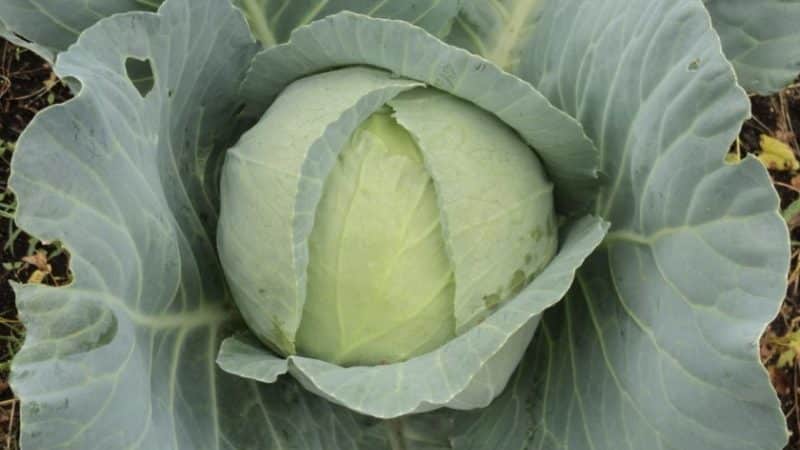
This late-ripening variety of white cabbage has proven its reliability over its 80-year history. Its breeding was carried out by Soviet scientists VNIISSOK. Several foreign samples were taken as a basis, of which the most suitable variety was from Sweden.
The experiment on breeding the Amager variety began in 1927. Tests went on for a long time, until in 1943 it was zoned and entered into the state register.
Initially, the variety had an additional digital designation “611”. However, after collecting seeds in the southern regions, the numbers were removed from the name, thus marking a certain subvariety with adaptation to the southern climate with elevated daytime temperatures and drought.
Chemical composition, trace elements and vitamins, beneficial properties
The main feature of cabbage is its high fiber content, which is necessary for the normal functioning of the digestive system. This is a dietary product, it contains only 27 kcal per 100 g. Sauerkraut and salted cabbage contains vitamin C, which is necessary to increase immunity to colds.
Of the useful microelements, it is worth noting potassium, silicon, manganese, boron, cobalt, chromium.B vitamins speed up metabolism, and folic acid is involved in the synthesis of hemoglobin and saturates the blood with oxygen.
Features of application
After the crop has ripened in the cellar (1-1.5 months), Amager cabbage is used to prepare salads, soups and side dishes. However, it is believed that late varieties are most suitable for pickling and fermentation, since by the time of ripening they accumulate the maximum amount of useful substances.
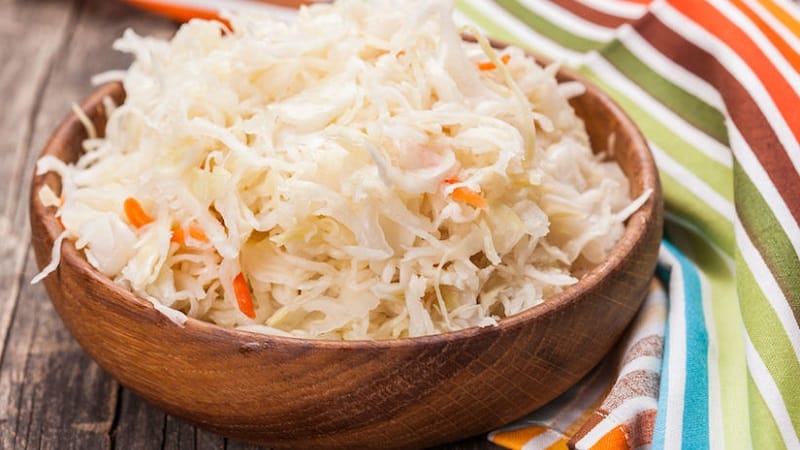
Ripening period
Amager cabbage reaches technical ripeness 150-170 days after the appearance of the first shoots. However, the harvest needs to rest so that the leaves lose their bitter taste and become juicier.
Productivity
Over the years, Amager has established itself both among ordinary farmers and in industrial production. With proper agricultural technology, from 1 sq. m you can get up to 7 kg of vegetables (from 1 hectare - up to 65 tons).
Disease resistance
It is necessary to regularly carry out preventive procedures to prevent fungal diseases, to which (in particular fusarium) the variety has low immunity.
Cold resistance
The variety is characterized by frost resistance. You can plant seeds and seedlings before late spring frosts, and already ripe cabbage forks can easily tolerate frost down to -3°C.
Characteristics, description of the appearance of leaves and heads of cabbage, taste
The variety has green smooth leaves with a waxy coating and a wavy edge. Leaf length – from 80 cm, semi-spreading rosette type. The head is dense, with a diameter of 70-110 cm and a weight of 2.5-4 kg. When harvested, the leaves have a bitter taste, but after a while it changes for the better, becoming rich and sweet.
Growing regions and climate requirements
The Amager variety is suitable for cultivation in the following regions: Northwestern, Central, Volga-Vyatka, Central Black Earth, North Caucasus, Middle Volga, Lower Volga, Ural, West Siberian, Far Eastern.
For a good harvest, the climate should not be dry, with a late onset of winter in the absence of severe autumn frosts.
Advantages and disadvantages

The advantages of the variety include the following indicators:
- well studied and time-tested;
- stable high yield;
- maturation occurs simultaneously;
- the heads of cabbage are large, dense;
- cold resistance;
- long shelf life without loss of taste (until April);
- During storage, the heads of cabbage do not crack or deform.
Among the disadvantages of Amager they note:
- the need for regular, abundant watering;
- growth stops in hot weather;
- it has a bitter aftertaste when harvesting, the heads of cabbage need to rest;
- susceptibility to fusarium (black rot).
Difference from other varieties and hybrids
Amager is not suitable for growing in northern regions, where winter comes early - the crop does not have time to ripen. In addition, the variety is susceptible Fusarium disease and vascular bacteriosis.
However, Amager has one of the longest shelf life, until the end of April. It is noted that it can be extended for a month or two if the top foliage is removed from the heads of cabbage in the spring.
Features of planting and growing
There are two ways to plant Amager on your site: seeds and seedlings. Experienced gardeners recommend giving preference to the second option in order to get a healthy and abundant harvest.
Preparing for landing
Choose a flat, well-lit area; the soil should be dug up and loosened to provide a sufficient amount of moisture and air.You cannot plant cabbage after radishes, radishes, mustard and other varieties of cabbage.
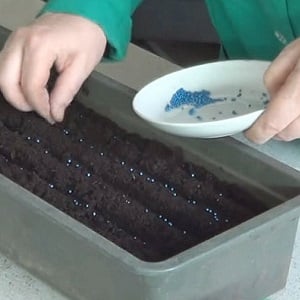
Seed preparation
For planting, it is better to use purchased seeds. They do not need additional processing. It is important to monitor the expiration date - expired seeds will have low germination rates.
If seeds obtained from a previous harvest are used, it is recommended to treat them with aloe juice, a weak solution of potassium permanganate or Fitosporin.
Preparing seedlings
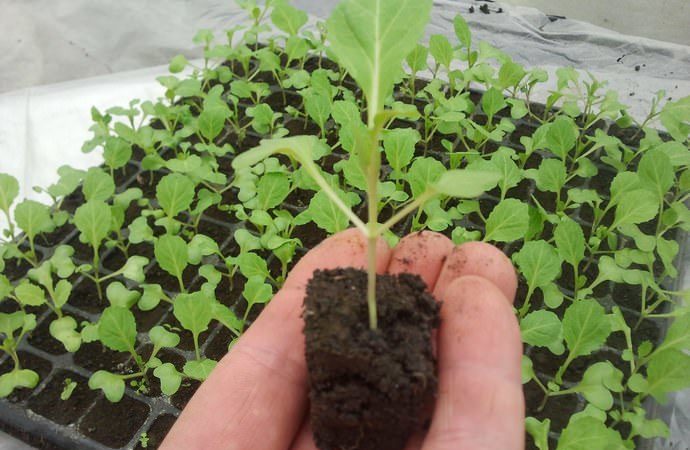
Seeds for seedlings are sown in a box with soil (solid sowing followed by picking) or in separate cups of 100-200 ml (2-3 seeds each, leaving the strongest sprout in the future). It is best to prepare the soil in the fall so that it freezes over the winter and kills bacteria and pest larvae.
If you mix garden soil and humus in equal parts, after planting the seedlings in the beds, the sprouts will take root better and develop faster. Other soil mixtures are also suitable:
- peat, turf soil, sand (in equal parts);
- one part of peat and sand with two parts of turf;
- equal parts of sand, peat, humus and earth.
When the first shoots appear, the seedlings are transferred to a cool, well-lit place. Watering is carried out when the top layer of soil dries. In the first five days, the temperature regime is +10... +12°C. In the future - from +16 to +20°С.
Two weeks before transferring them to open ground, the seedlings are hardened by taking them outside, starting at one hour and gradually increasing to 12 hours.
How to plant without seedlings
In the southern regions, Amager can be planted by seed. Seeds are planted when the soil warms up to +5°C. Before this, the soil is sprinkled with ash, and 5 g of urea is added to each hole.The seeds are buried 1 cm, covered with loose soil and covered with lutrasil, which is removed 2-3 weeks after germination.
Soil requirements
The soil for growing must be fertile, with neutral or close to neutral acidity (pH 6.2-7.5). In the fall, peat, humus, ash and mineral fertilizers.
Predecessors
Amager needs fertile soil, so the best predecessors for cabbage are legumes, potatoes, zucchini, tomatoes and melons.
Dates, scheme and rules of planting
Seedlings begin to be grown at the end of March or beginning of April, and they are transferred to the ground after 50-55 days, when the sprouts have formed 3-4 large leaves. The plant is placed in a hole with 5 g of urea, sprinkled with soil up to the first leaves and compacted. After this, the cabbage is watered and covered with film or cloth for the first 3-5 days.
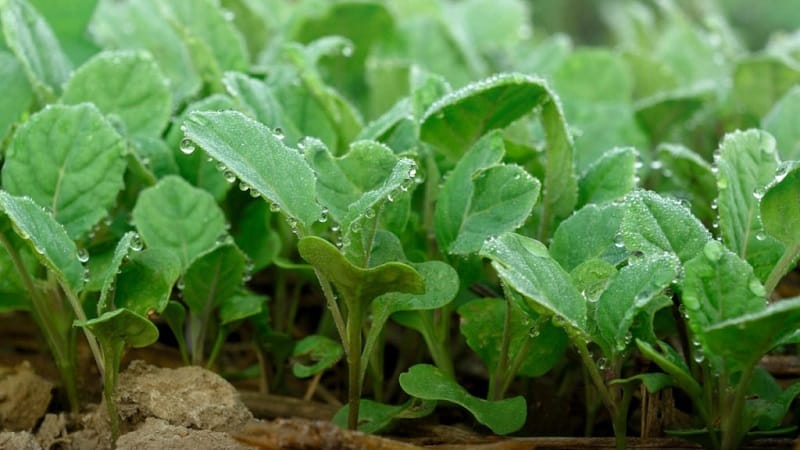
Planting density and depth
The seeds are immersed in the soil 1-1.5 cm, the seedlings are buried down to the first leaves. Amager does not like shading, so keep at least 80 cm between plants and 60-70 cm between rows.
Features of cultivation
By following simple agricultural techniques, you can achieve a good harvest.
Watering mode
After planting in open ground, young seedlings are watered once every two days for two weeks. Then watering is reduced to twice a week, preventing the soil from completely drying out and cracking, and increased when heads are set (July - August). Take warm water and water it in the morning and evening to avoid sunburn.
Important! Cold water slows down the growth of cabbage and provokes the development of diseases.
The drip method is used, water is poured exclusively at the root.A month before harvesting, the procedure is stopped to increase shelf life and prevent the heads of cabbage from cracking.
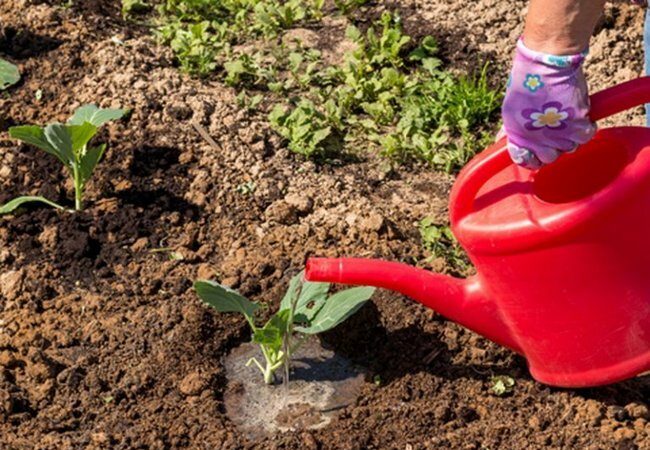
Loosening and hilling
Regular weeding and loosening keep the soil clean, strengthening the root system and preventing disease infection. Loosening is required regularly, before each watering and after precipitation.
Reference. Experienced farmers use mulch (straw, sawdust, film) to reduce labor and time costs.
For the first time, hilling is done immediately after the formation of 2-3 large leaves. This is necessary in order to develop lateral roots. As soon as the ovary appears, the leg needs to be strengthened, so at this moment the Amager is spudded a second time. Additionally, the procedure is repeated every time the stalk is exposed.
Top dressing
In order for the harvest to please with large heads of cabbage, it is necessary to fertilize the plant. The first feeding is carried out immediately after planting the seedlings, watering the sprouts with a solution of 10 liters of water, 10 g of urea and 20 g of superphosphate.
Until July, nitrogen-containing fertilizers are applied to the soil at the rate of 20 g per 10 liters of water (2-3 times a month). Next, preparations with phosphorus and potassium are used in the same quantities.
Attention! Fertilizers with nitrogen cannot be used when forming heads of cabbage, as they stimulate the growth of leaf mass. Therefore, after July, when the heads are formed, nitrogen-containing fertilizers cannot be used.
Measures to increase yield
Amager is loved by farmers for its consistently high yields with a minimum of effort. Large and juicy heads of cabbage can be obtained by following the basic rules of care:
- It is preferable to plant in seedlings;
- comply with the conditions of watering, loosening and hilling;
- bring in feeding, corresponding to the stage of development;
- carry out preventive measures to combat diseases and pests in a timely manner.
During the last watering, it is recommended to introduce fertilizing with drugs that increase yield: “Zdraven”, “Bud”, “Effekton”. They stimulate fetal growth and promote the concentration of vitamins and mineral salts in the fork. You can irrigate the soil with boric acid until it is completely moistened, this will help vegetables be better stored in winter.
Attention! In hot weather, increase watering and cover the cabbage with straw so that the leaves do not get sunburned and the vegetable does not stop developing.
Disease and pest control
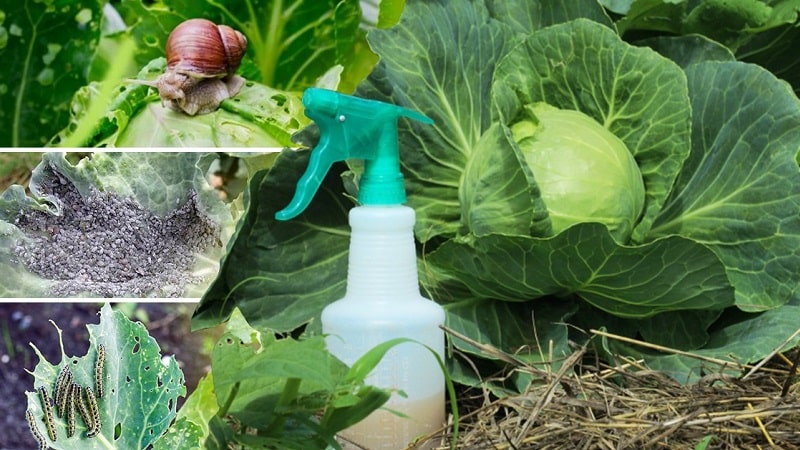
It consists of timely implementation of preventive measures. Before planting, ash, insect repellent “Nitrophoska”, and mineral fertilizers are added to the soil, which both accelerate the growth of cabbage and increase plant immunity.
Seedlings in open ground are treated with the drug “Immunocytophyte”. It increases the resistance of cabbage to fusarium and cabbage rot. For solution, 1 tablet is dissolved in 2 liters of cold water. The first spraying of seedlings is carried out after adaptation to the soil, the second - before the formation of a head of cabbage.
To prevent insects and slugs, cabbage is sprayed with a solution of ammonia (5 g per 1 liter of water). Aktara solution (4 g per 10 l) is effective against fleas. Folk remedies include an infusion of potato or tomato tops.
Important! Pests are repelled by planting lettuce, celery, and leeks, and dill also improves the taste of cabbage. To prevent diseases, cabbage plants are not planted in the same area earlier than after 4 years.
Difficulties in growing
Amager cannot be called a whimsical variety, however, when growing it, some features should be taken into account:
- in hot weather, growth stops if watering is insufficient;
- cabbage is threatened by fungal diseases, so regular prevention is mandatory;
- Amager loves light, so proper planting density is important.
Harvest and storage
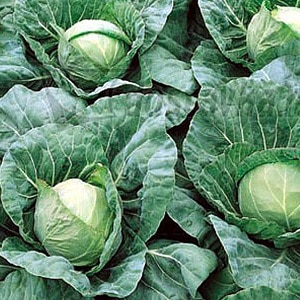
In order for the harvest to last as long as possible, it is necessary to adhere to the rules for its collection and further storage.
As soon as the night temperature drops to -3°C, it is necessary to begin harvesting so that the heads of cabbage do not freeze. Thanks to the simultaneous ripening, Amager cabbage can be harvested using agricultural machinery.
For small volumes, the forks are cut off by hand, leaving the top leaves to preserve the appearance. Harvesting is carried out on a dry, sunny day, in the southern regions - at the end of October, in the rest - at the end of September.
Storage features and keeping quality of the variety
A well-ventilated cellar with a temperature of +1... -1°C is suitable for storing cabbage. Air humidity in the room should be maintained within 90-95%. Such conditions allow the harvest to be preserved until April.
Read also:
Early maturing cabbage hybrid Krautkaiser F1
Reviews from experienced gardeners
The almost century-old variety collects only positive reviews.
Natalya, Saratov region: “The variety is good, the heads of cabbage grow large, as in the photo, on average 3-4 kg. It does not require special care, the main thing is to monitor regular watering. The harvest is stored until April, after which it is necessary to remove the top leaves, otherwise the forks begin to rot.”
Alexey, Rostov region: “I plant Amager exclusively using seedlings, so the plants are hardier and stronger.Before planting seeds, I use biostimulants and cover the pots with a cloth for the first few days. I store the harvest in the cellar, it lies quietly until May, and does not rot.”
Conclusion
Amager cabbage is grown both for personal use and on an industrial scale. The taste of the heads of cabbage only improves over time, which allows them to be stored until the end of spring. By following basic agricultural practices, you can get a rich harvest, ideal for pickling and fermentation.